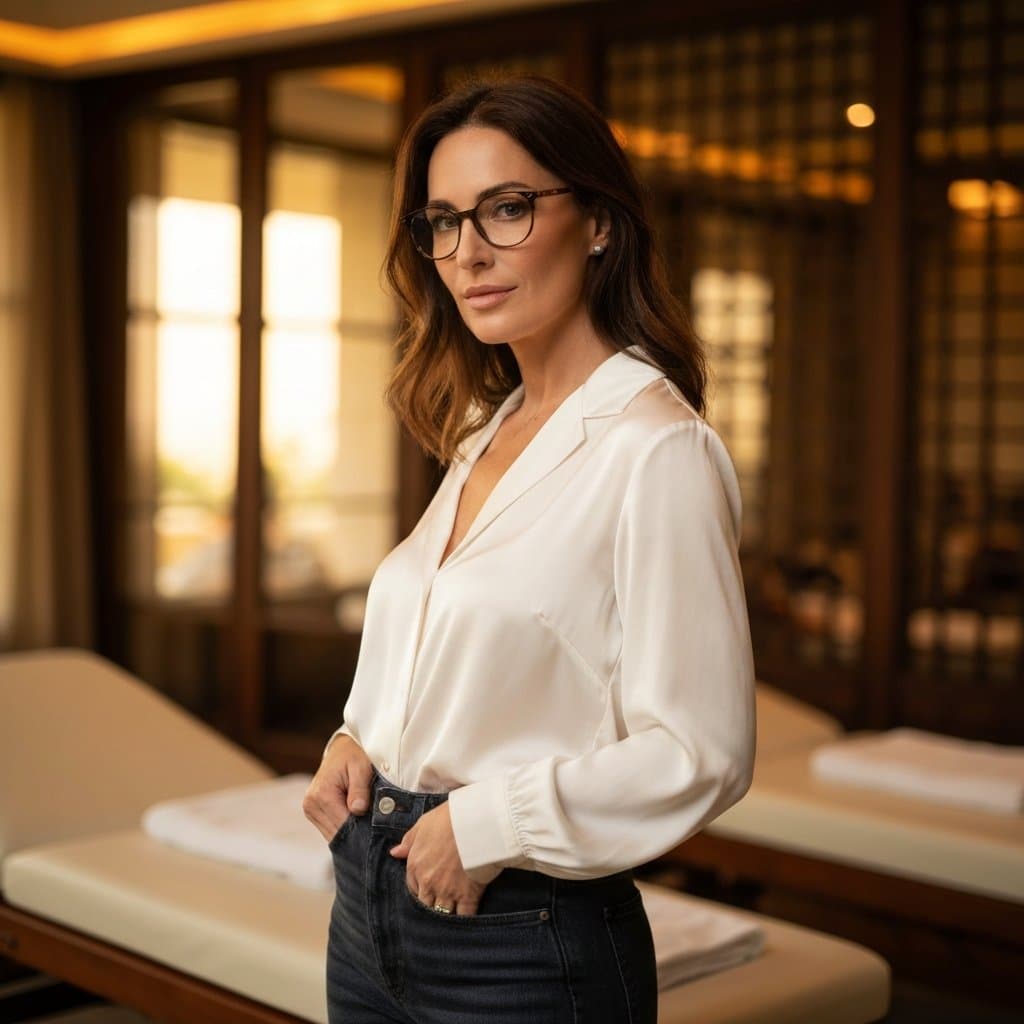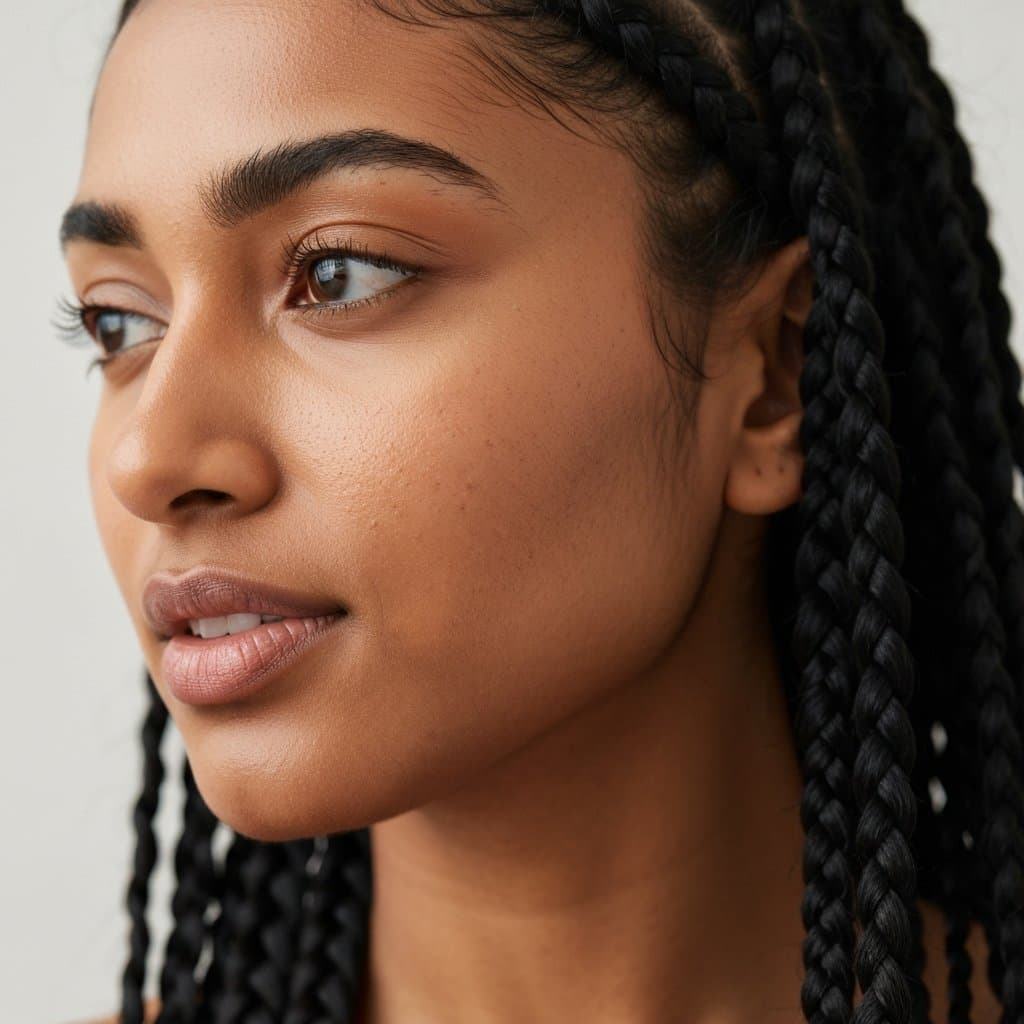The Butterfly Haircut: A Guide to Fluttery Layers | Pro Salon Tips
The Fluttery Layers You've Been Waiting For: An Introduction to the Butterfly Haircut
Step into any modern hair salon, and you'll hear the buzz. A new-yet-nostalgic haircut is taking the world by storm, gracing social media feeds and celebrity red carpets alike. It's called the butterfly haircut, a beautifully structured style that masterfully blends the best of both worlds: the airy volume of a short cut with the elegant length of long hair. This viral trend is more than just a fleeting moment; it's a celebration of movement, texture, and face-framing artistry that harkens back to the supermodel era of the '90s, reimagined for today's sophisticated client.
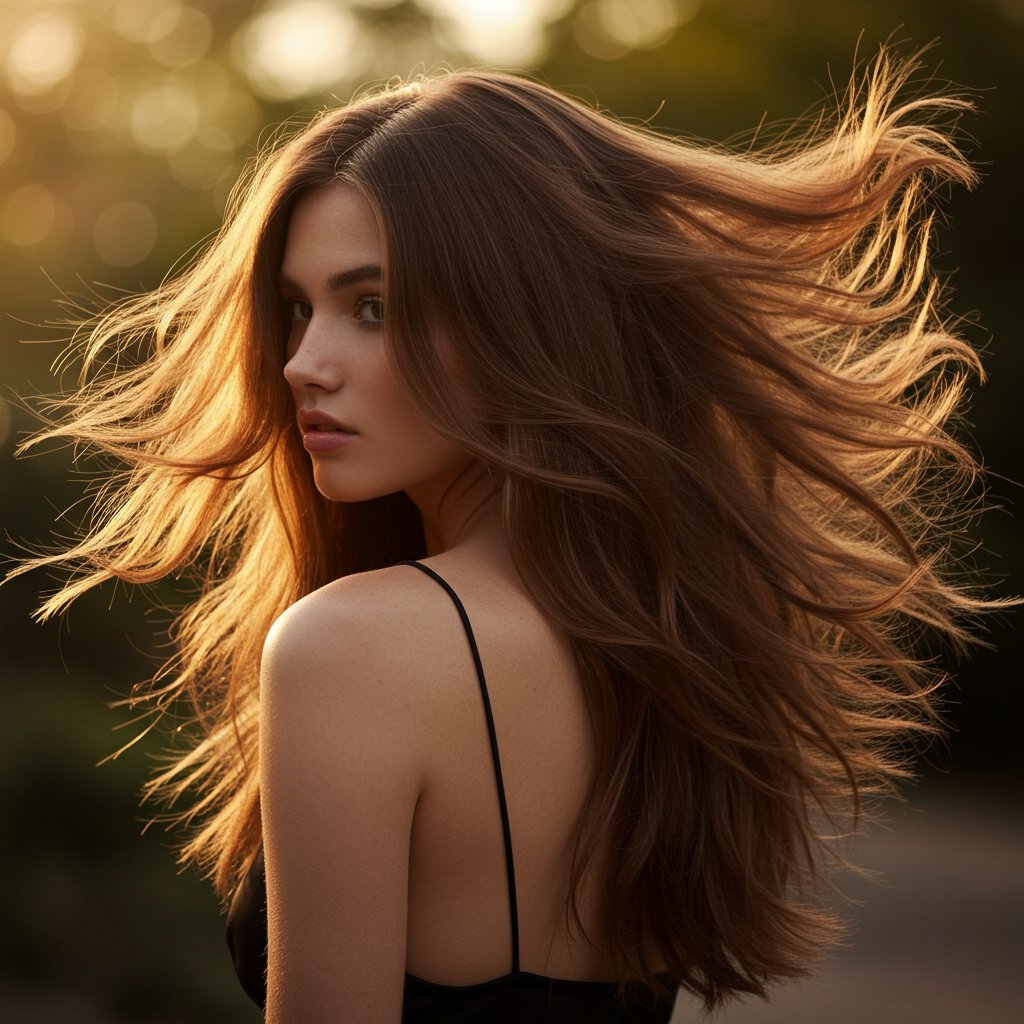
The genius of the butterfly haircut lies in its clever layering technique. It features shorter, feathered layers concentrated around the crown and face, mimicking the delicate shape of a butterfly's wings. These shorter pieces create incredible volume and bounce, giving the illusion of a shorter, bouncier style from the front. Meanwhile, the longer layers are preserved in the back, maintaining overall length and providing a graceful, flowing silhouette. It’s the ultimate solution for anyone who has ever craved a dramatic change without committing to a big chop. This guide will delve deep into everything you need to know about this transformative style, from its technical anatomy to styling secrets and maintenance tips.
What Exactly Is the Butterfly Haircut?
At its core, the butterfly haircut is a highly strategic, multi-layered cut designed to create maximum volume, movement, and shape. It’s defined by two distinct sections of layers. The first consists of shorter, face-framing layers that typically fall around the chin or collarbone. These are cut to cascade away from the face, much like an evolution of the curtain bang, creating a soft, 'fluttery' effect. This top section is what gives the haircut its signature volume and the illusion of a shorter, dynamic style when viewed from the front.
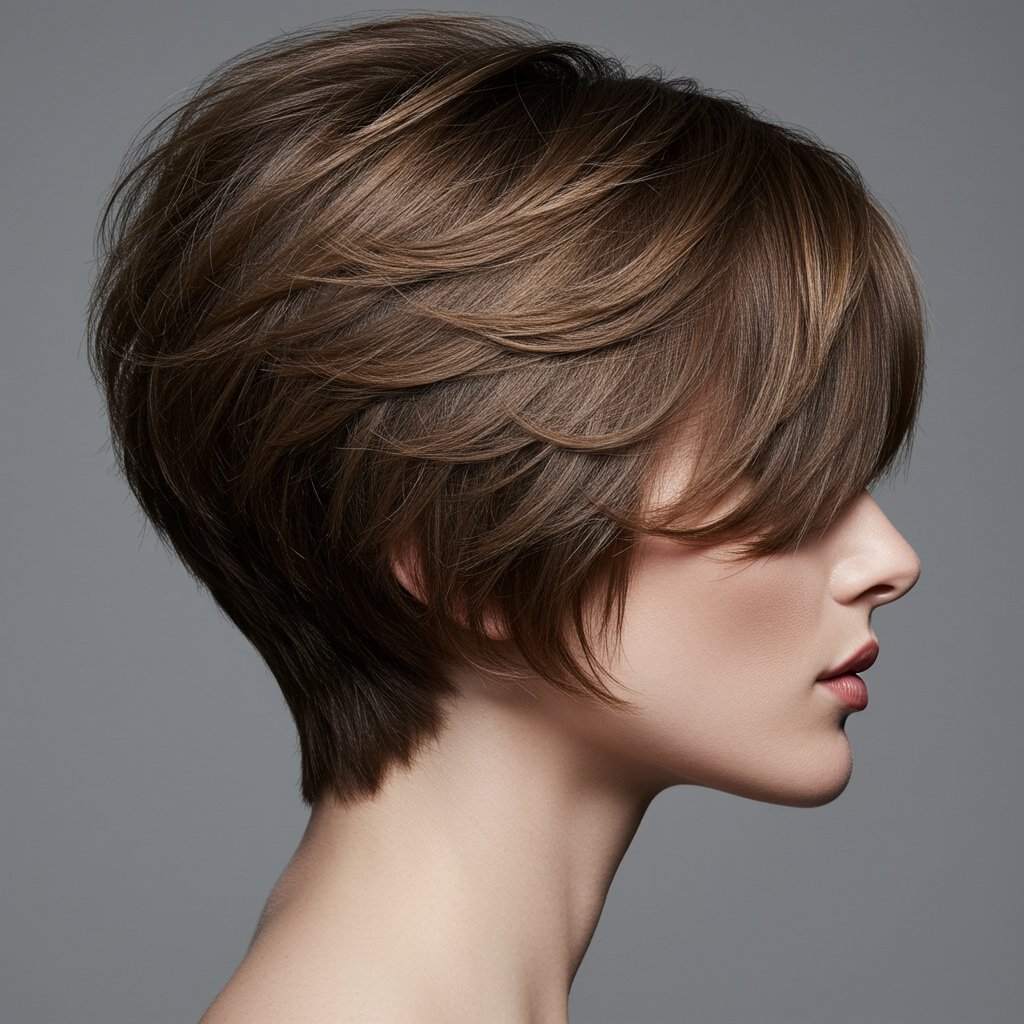
Beneath this voluminous crown, the second section preserves the length. Longer, seamless layers are cut throughout the back and sides to remove weight, prevent the ends from looking heavy, and encourage a soft, flowing movement that complements the shorter top layers. When blended correctly by a skilled stylist, the transition between the short and long layers is seamless, creating a cohesive and harmonious look rather than a disconnected 'mullet' effect. This duality is the haircut's main appeal—it offers the playful energy of a bob with the romantic elegance of long, flowing locks, all in one style.
Differentiating from Other Layered Cuts
It's easy to confuse the butterfly haircut with other popular layered styles like the shag or the wolf cut, but they have key differences. A classic shag is much choppier, with heavily textured, thinned-out layers from root to tip for a rock-and-roll aesthetic. The wolf cut is a hybrid of the shag and the mullet, featuring even more dramatic, disconnected layers with significant volume on top and much thinner, wispier length at the bottom. The butterfly haircut, in contrast, is far softer and more blended. Its focus is on creating a luxe, polished volume and a '70s-meets-'90s supermodel blowout look, rather than edgy, undone texture.
The Anatomy of the Cut: How Stylists Achieve the Look
A professional stylist approaches the butterfly haircut with precision and a clear understanding of hair architecture. The process begins with a thorough consultation to discuss suitability for the client's hair type, face shape, and lifestyle. The fundamental technique involves separating the hair into two main sections: a top section from the crown forward, and the remaining length at the back and sides. The top section is where the magic of the 'wings' is created. Stylists will often elevate this section and cut shorter layers, directing them away from the face to build that signature volume and frame the cheekbones and jawline.
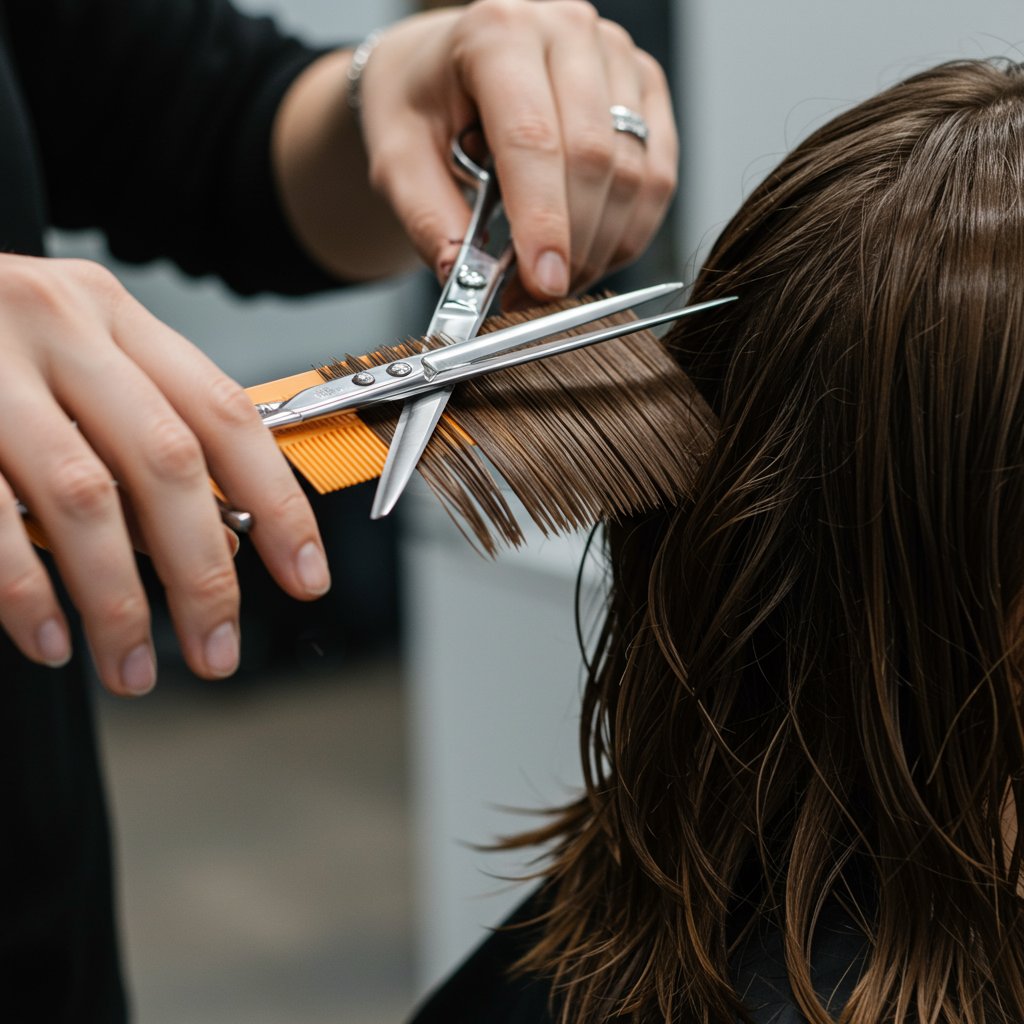
Integrating the face-framing pieces is crucial. These layers are meticulously cut, often using a slide-cutting or point-cutting technique to create softness and prevent harsh lines. They are designed to blend seamlessly from shorter curtain bangs, if present, down into the chin-length layers, creating a continuous, sweeping C-shape around the face. The back section is then layered to connect with the front, ensuring the overall look is cohesive. The goal is to remove weight where necessary while maintaining a healthy, full perimeter. This expert blending prevents the style from looking like two separate haircuts and instead creates one fluid, dynamic shape.
The Tools of the Trade
To achieve the soft, feathered finish characteristic of the butterfly haircut, stylists rely on specific tools. Sharp shears are a given, but many professionals will also use a feather razor on certain sections (especially on thicker hair) to create wispy, diffused ends that enhance the fluttery effect. Texturizing shears may be used sparingly to soften bluntness within the layers. The final result is a testament to the stylist's skill—a haircut that looks effortlessly chic and grows out beautifully, maintaining its shape for weeks.
Who Is the Butterfly Haircut Best For? Exploring Hair Types and Face Shapes
The universal appeal of the butterfly haircut is one of the biggest reasons for its popularity. Its versatile structure can be adapted to flatter a wide range of hair types and face shapes. For those with medium to thick hair, this cut is a dream come true. The layers work wonders to remove excess weight and bulk, creating movement and preventing the hair from feeling heavy or shapeless. Wavy and curly hair types can also embrace this style, as the layers enhance natural texture and create a beautiful, defined shape, reducing the dreaded 'triangle' effect.
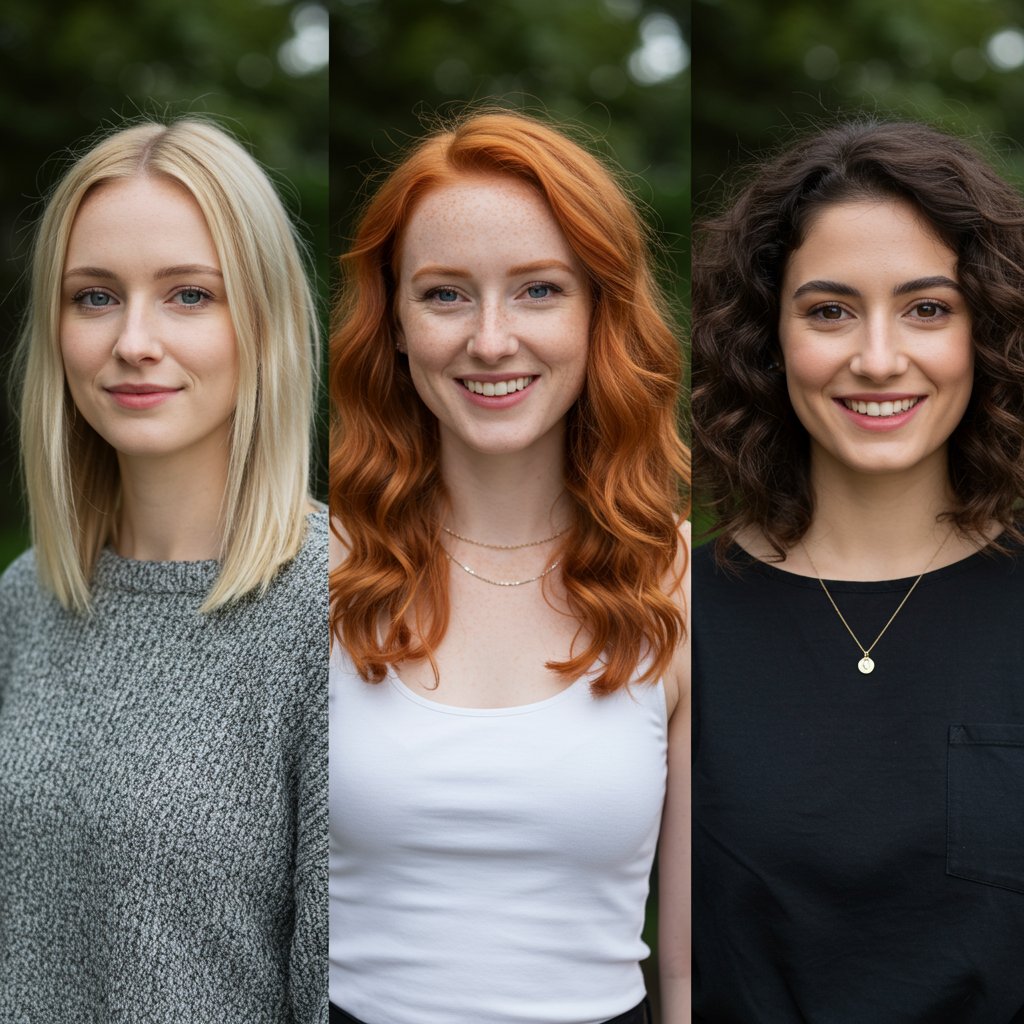
For those with fine or thin hair, the butterfly haircut can be a game-changer for creating volume. A skilled stylist will adapt the technique, keeping the layers slightly longer and more concentrated at the crown to build lift without sacrificing too much density at the ends. The shorter face-framing layers give the illusion of fuller, thicker hair around the face. The key is strategic layering rather than aggressive thinning. It’s a style that provides body and life to hair that might otherwise fall flat.
Flattering Every Face Shape
The butterfly haircut is exceptionally flattering for various face shapes due to its soft, face-framing nature. For oval faces, the balanced proportions are enhanced by the layers, which add movement and interest. For round or square faces, the longer face-framing layers are incredibly effective at softening angles and creating the illusion of length. The volume at the crown helps to elongate the face, while the soft tendrils around the jawline soften a strong jaw. For heart-shaped faces, the layers that fall around the chin and collarbone add width and balance to a narrower jawline, creating a more harmonious silhouette.
The '90s Supermodel Vibe Reimagined: Why It's Trending Now
The aesthetic of the butterfly haircut is deeply rooted in the glamour of the past, specifically the bombshell blowouts of the '70s and the supermodel era of the '90s. Think of the iconic, voluminous styles of Farrah Fawcett, Cindy Crawford, and even Jennifer Aniston's famous 'Rachel' cut. These styles were all about healthy, bouncy hair with tons of movement and face-framing layers. The modern butterfly haircut captures this essence but refines it for a contemporary audience. It's less about stiff, hair-sprayed perfection and more about effortless, touchable volume.
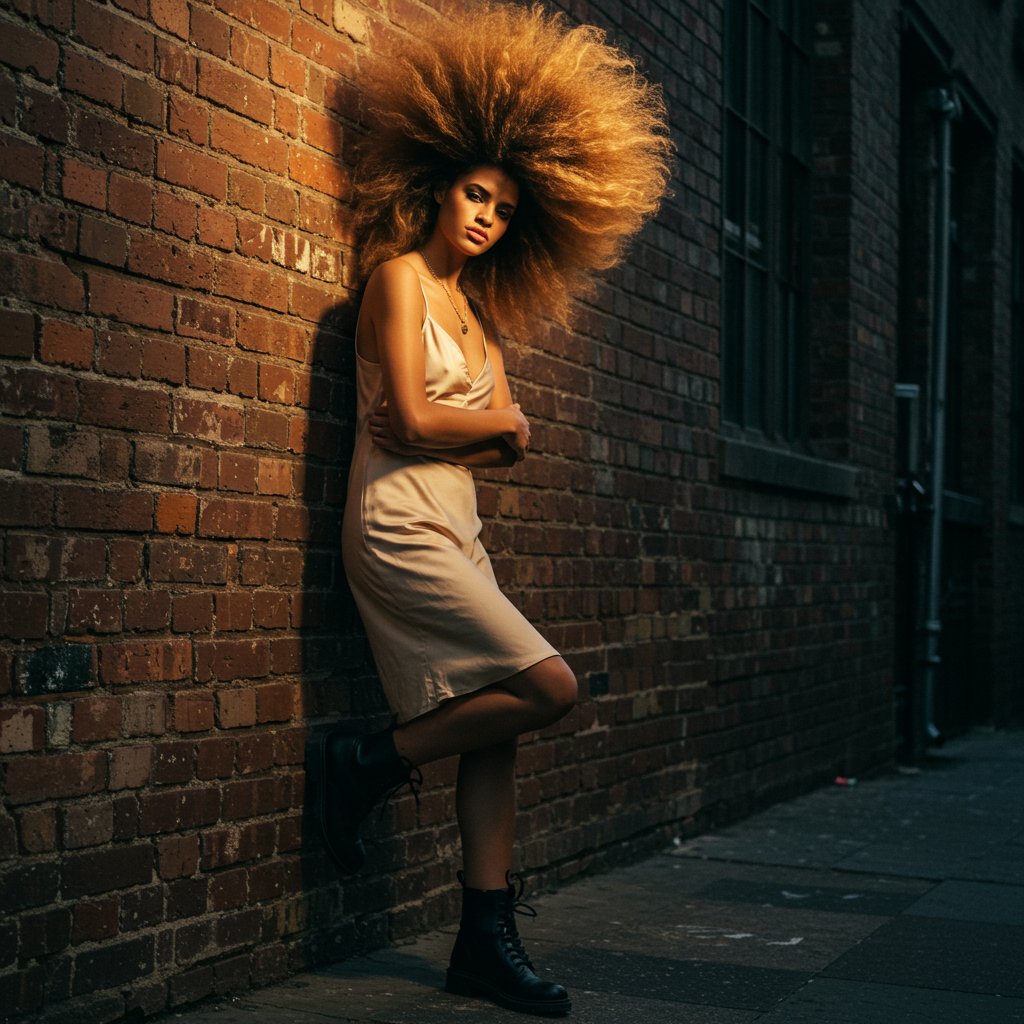
Its resurgence has been massively fueled by social media platforms like TikTok and Instagram, where tutorials and transformations showcasing the cut have gone viral. The visual appeal is undeniable—the 'before and after' reveals are dramatic, showing how the layers can completely transform a person's look without sacrificing their cherished length. This makes it a relatively low-risk, high-reward option for those seeking a change. It taps into our collective nostalgia for '90s fashion and beauty while feeling fresh and perfectly suited to the modern desire for versatile, 'lived-in' hairstyles that look just as good air-dried as they do professionally styled.
Butterfly Haircut vs. Other Layered Styles: A Comparative Guide
With so many layered cuts trending, it's helpful to understand the nuances that set the butterfly haircut apart.
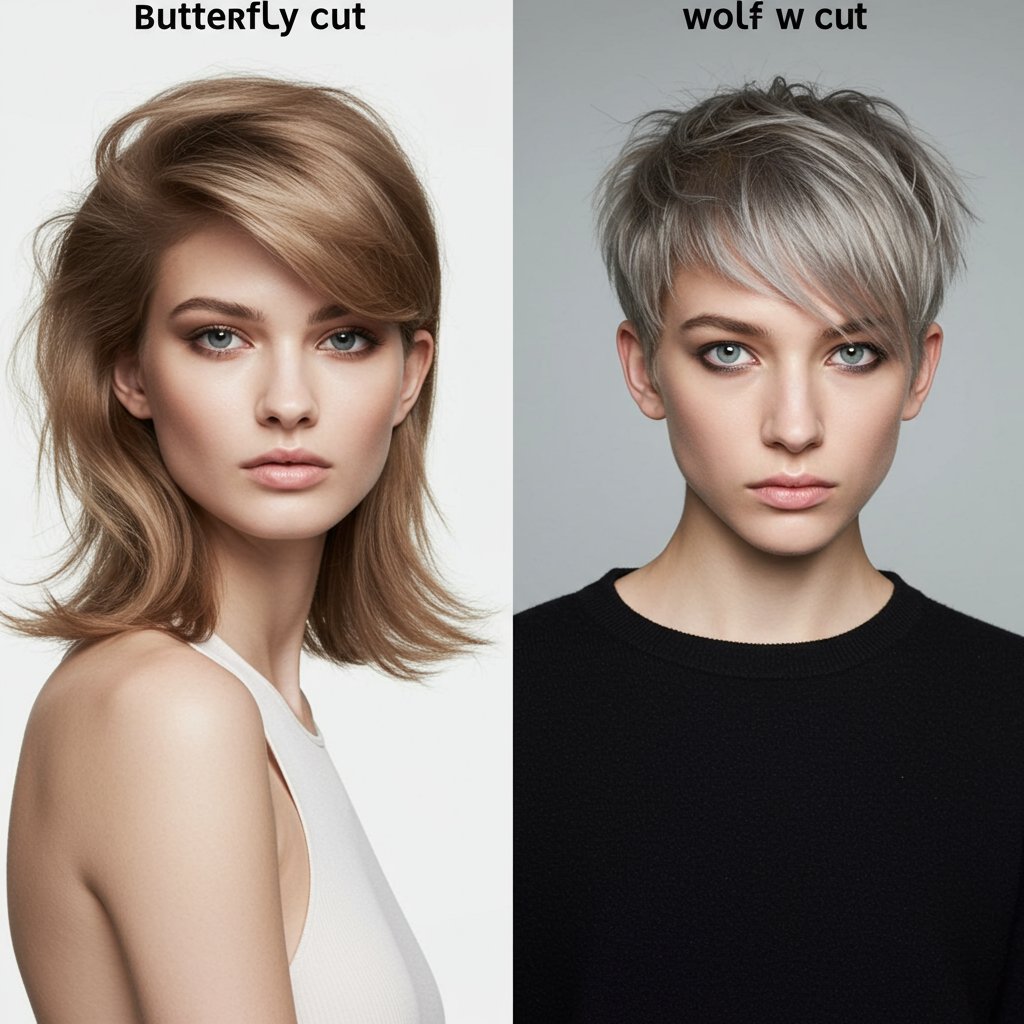
Butterfly vs. The Shag
The key difference here is texture and finish. The shag is defined by its choppy, heavily textured layers and often includes a full, piecey fringe. Its vibe is edgy, undone, and rock-and-roll. The butterfly cut is smoother, more polished, and focuses on creating rounded, C-shaped volume. Its layers are blended and designed to 'flutter' rather than 'shatter'.
Butterfly vs. The Wolf Cut
The wolf cut is a direct hybrid of the shag and the mullet. It features a very dramatic disconnection between the short, voluminous top layers and the much thinner, longer hair at the bottom. It's a bolder, more alternative style. The butterfly haircut ensures a seamless blend between its short and long layers, creating a more classic and sophisticated silhouette.
Butterfly vs. Traditional Long Layers
Traditional long layers are typically more subtle, designed primarily to remove weight and add slight movement to the ends of the hair. The butterfly haircut is far more structured, with its distinct short-on-top, long-on-bottom layering pattern. It creates significantly more volume at the crown and a much more pronounced face-framing effect than standard long layers.
Styling Your Butterfly Haircut at Home: A Step-by-Step Guide
To truly make your butterfly haircut shine, a bouncy blowout is the go-to styling method. It enhances the layers and creates that signature supermodel volume.
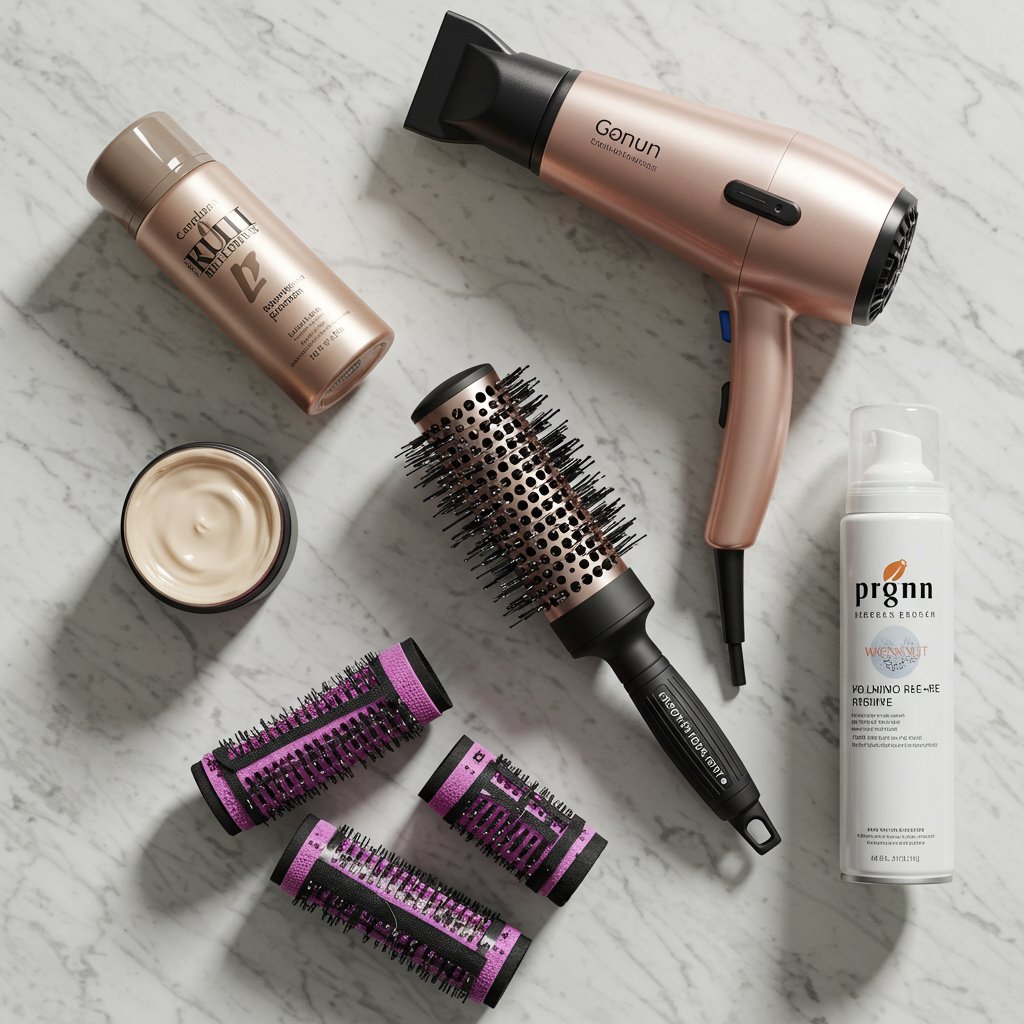
Tools & Products You'll Need
- Volumizing Mousse or Root Lift Spray: To build body at the roots.
- Heat Protectant: A crucial step to protect your hair's health.
- A Round Brush: A medium-to-large ceramic or boar bristle round brush is ideal.
- A Blow Dryer with a Concentrator Nozzle: For precise airflow.
- Velcro Rollers (Optional): For long-lasting volume and curl.
- Light-Hold Hairspray or Texturizing Spray: To set the style without stiffness.
The Blowout Technique
- Prep: Start with damp, towel-dried hair. Apply a generous amount of volumizing mousse, focusing on the roots. Mist a heat protectant all over.
- Rough Dry: Flip your hair upside down and rough dry until it's about 80% dry. This creates instant, natural volume.
- Section and Style: Section your hair, starting with the bottom layers. Using your round brush, blow dry each section, pulling up and away from the root for lift. As you reach the ends, roll the brush inwards or outwards to create a soft flick.
- Focus on the Top: For the shorter, face-framing layers, use the round brush to blow them away from your face, creating that classic 'fluttery' C-shape.
- Set with Rollers (Optional): For extra bounce, while the top sections are still warm from the dryer, wrap them around large velcro rollers. Let them cool completely before removing.
- Finish: Once all sections are dry, gently tousle your hair with your fingers. Finish with a light mist of hairspray to lock in the volume and shape.
Maintenance and Upkeep: Keeping Your Wings Fluttery
Like any structured haircut, the butterfly cut requires regular maintenance to keep its shape looking sharp and intentional. To maintain the integrity of the layers and prevent split ends, plan on visiting a salon for a trim every 8 to 12 weeks. The shorter face-framing layers may require a touch-up more frequently, perhaps every 6 to 8 weeks, to keep them from growing into your eyes and losing their shape.
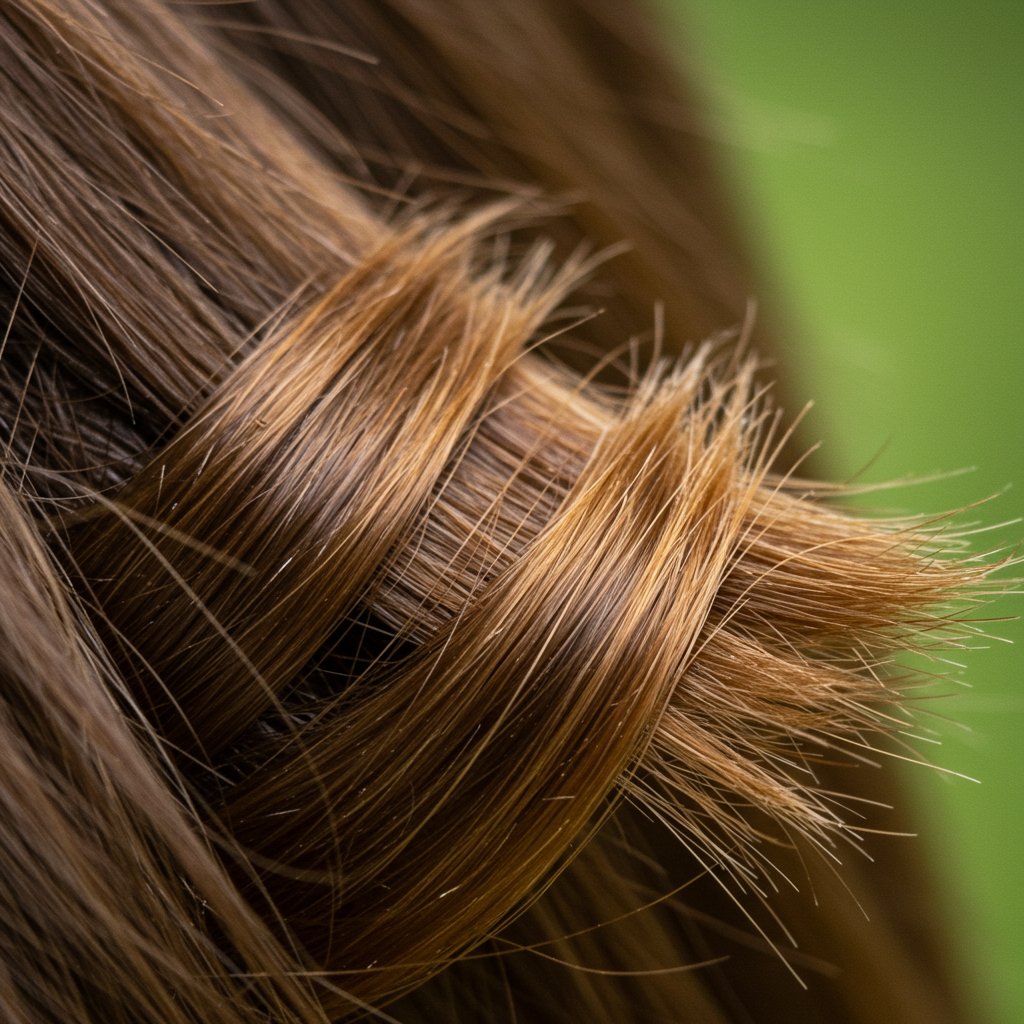
When you visit your stylist, be clear that you want to maintain the butterfly shape. Use photos as a reference and explain what you love about the cut—the volume at the crown, the face-framing, or the preserved length. Good communication ensures your stylist understands your goals. Between appointments, focus on hair health. Use nourishing masks and treatments to keep your ends hydrated, as healthy hair holds the style much better. A silk pillowcase can also help reduce friction and keep your blowout looking fresh overnight.
Frequently Asked Questions About the Butterfly Haircut
1. Can I get a butterfly haircut with shoulder-length hair? Yes, a modified version of the butterfly cut can work on shoulder-length hair. The principle remains the same: shorter layers on top to create volume and a face frame, with the longest layers just touching the shoulders. It creates a very bouncy, full-bodied lob (long bob).
2. Is the butterfly haircut high-maintenance? It can be, depending on your hair type and desired finish. To achieve the classic blowout look, it requires regular heat styling. However, it also looks beautiful when air-dried on wavy or curly hair, offering a more low-maintenance, bohemian vibe. The primary maintenance is regular trims to keep the layers sharp.
3. How much does a butterfly haircut typically cost? The cost varies significantly based on salon location, stylist experience, and your hair's length and thickness. As it is a technical cut that requires precision, expect to pay a mid-to-high-range price for a stylist experienced in advanced layering techniques.
4. Is the butterfly haircut good for hiding thinning hair? Absolutely. The shorter layers on top create volume and lift at the crown, which can effectively camouflage areas of thinning. The face-framing pieces also draw attention to the eyes and cheekbones, creating an illusion of overall fullness.
5. Can you still tie your hair up with a butterfly haircut? Yes, one of the best parts of this cut is its versatility. You can easily pull the longer layers into a ponytail or bun. The shorter face-framing layers will fall out, creating a soft, on-trend look that's very popular right now. It gives you the best of both up-do and down-do styling.
Conclusion: Embrace the Transformation
The butterfly haircut is more than just a trend; it's a smart, stylish, and incredibly flattering choice for anyone looking to add life, volume, and personality to their hair without a drastic commitment. It offers the playful dynamism of a short cut with the timeless elegance of long locks, all wrapped up in one beautifully blended style. Its ability to be customized for nearly any hair type and face shape makes it a true modern classic.
If you're ready to let your style take flight, the key is to seek out an experienced stylist who understands the precise architecture of this layered look. A professional consultation can help you determine the perfect variation for your unique features and lifestyle. Embrace the flutter, the volume, and the movement—your transformative new look awaits.
